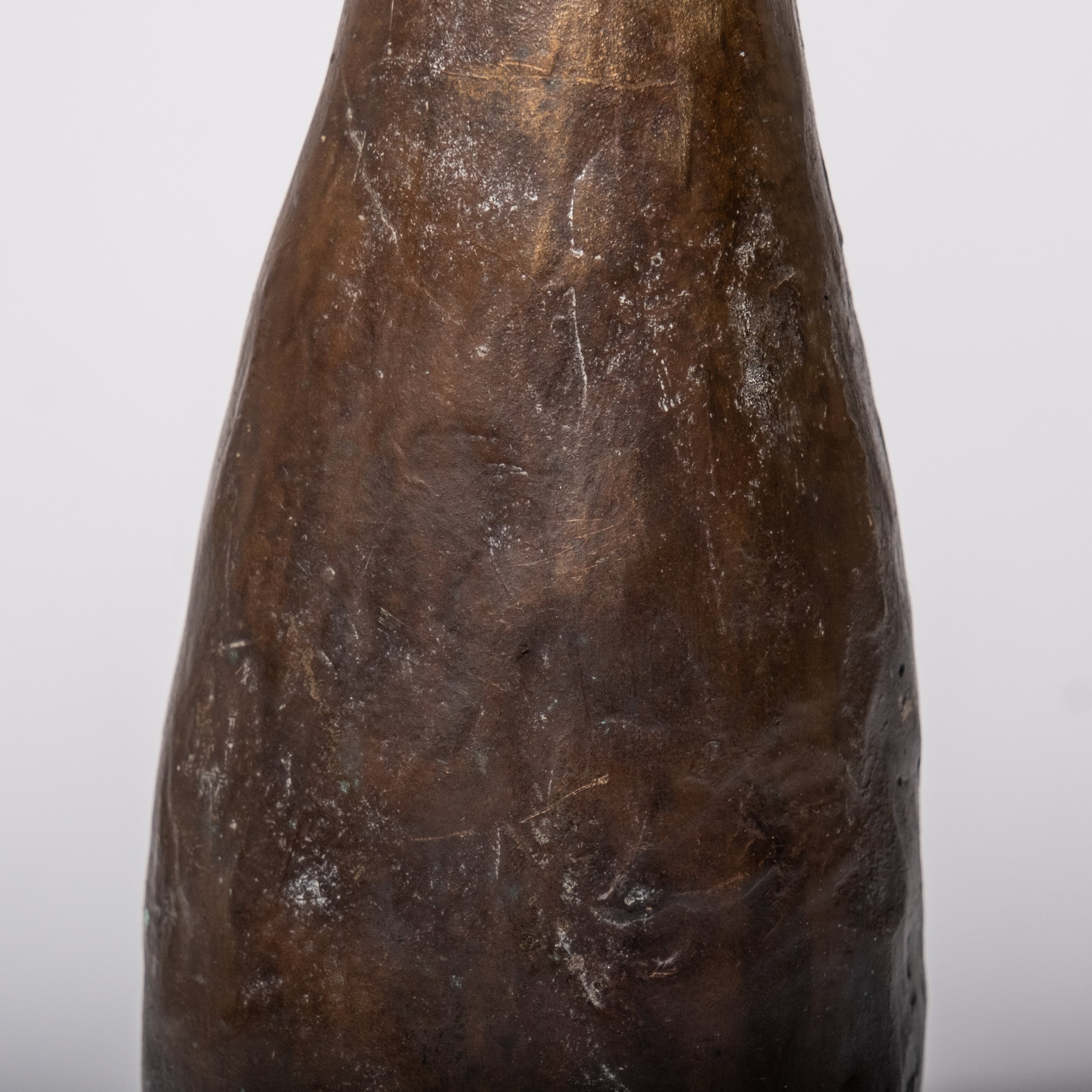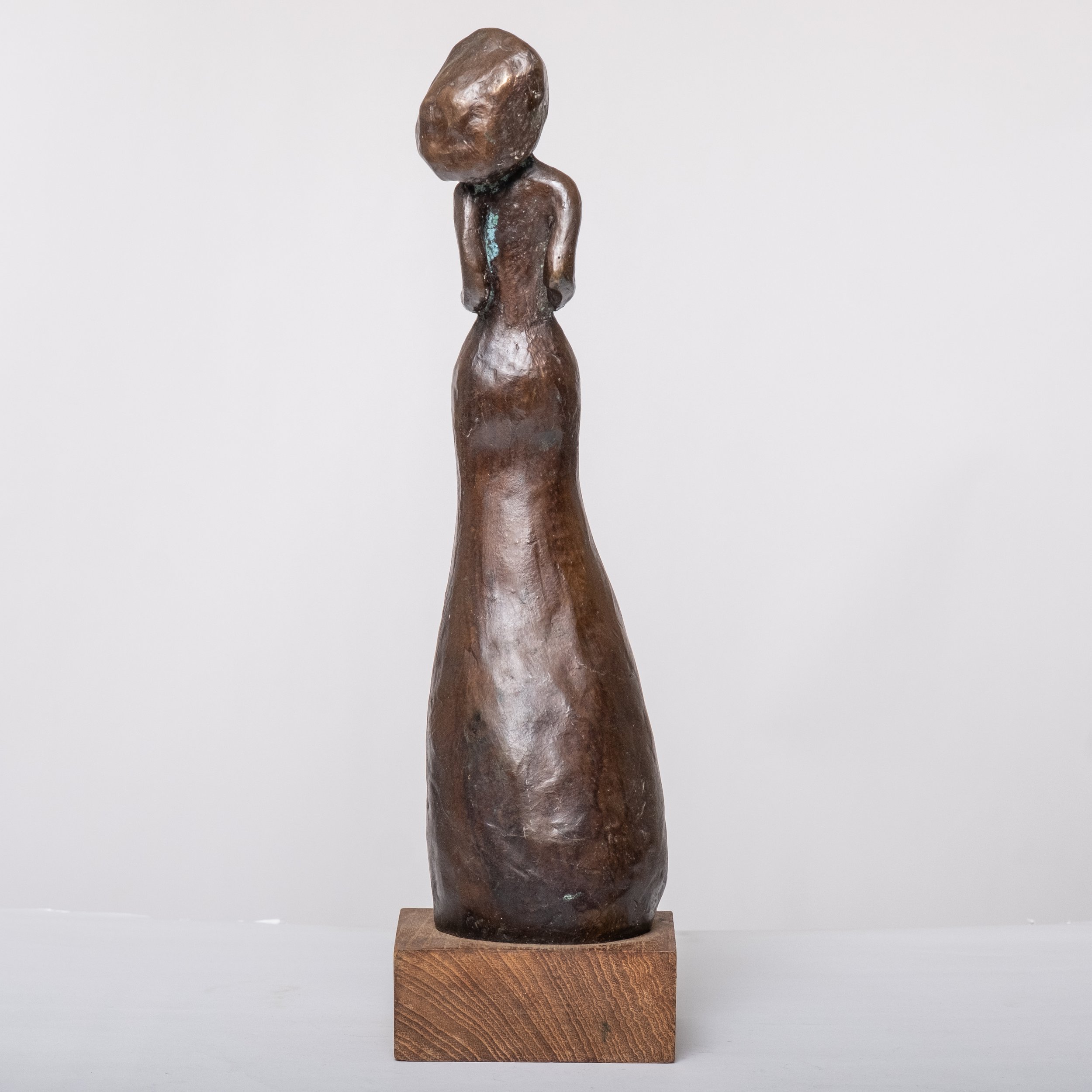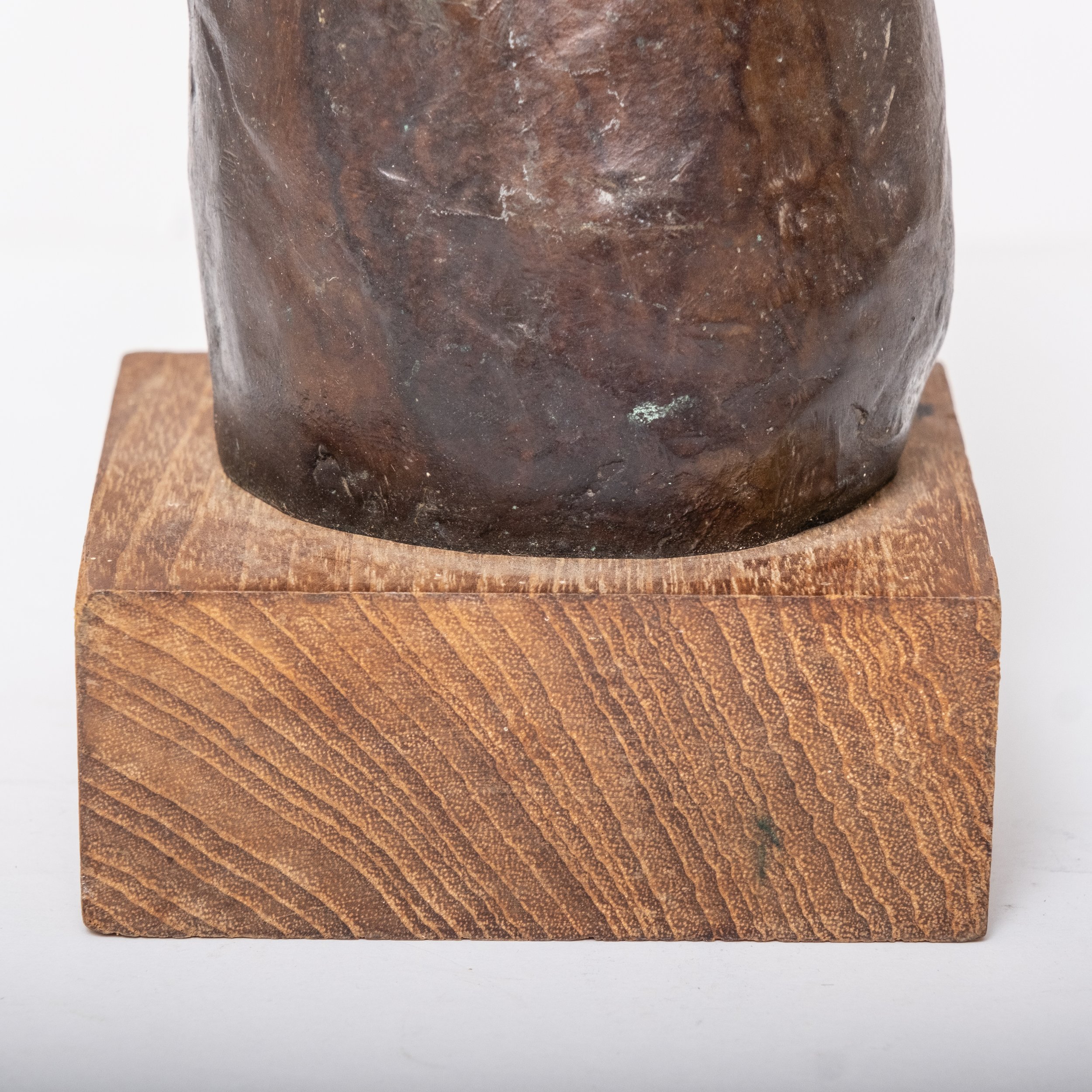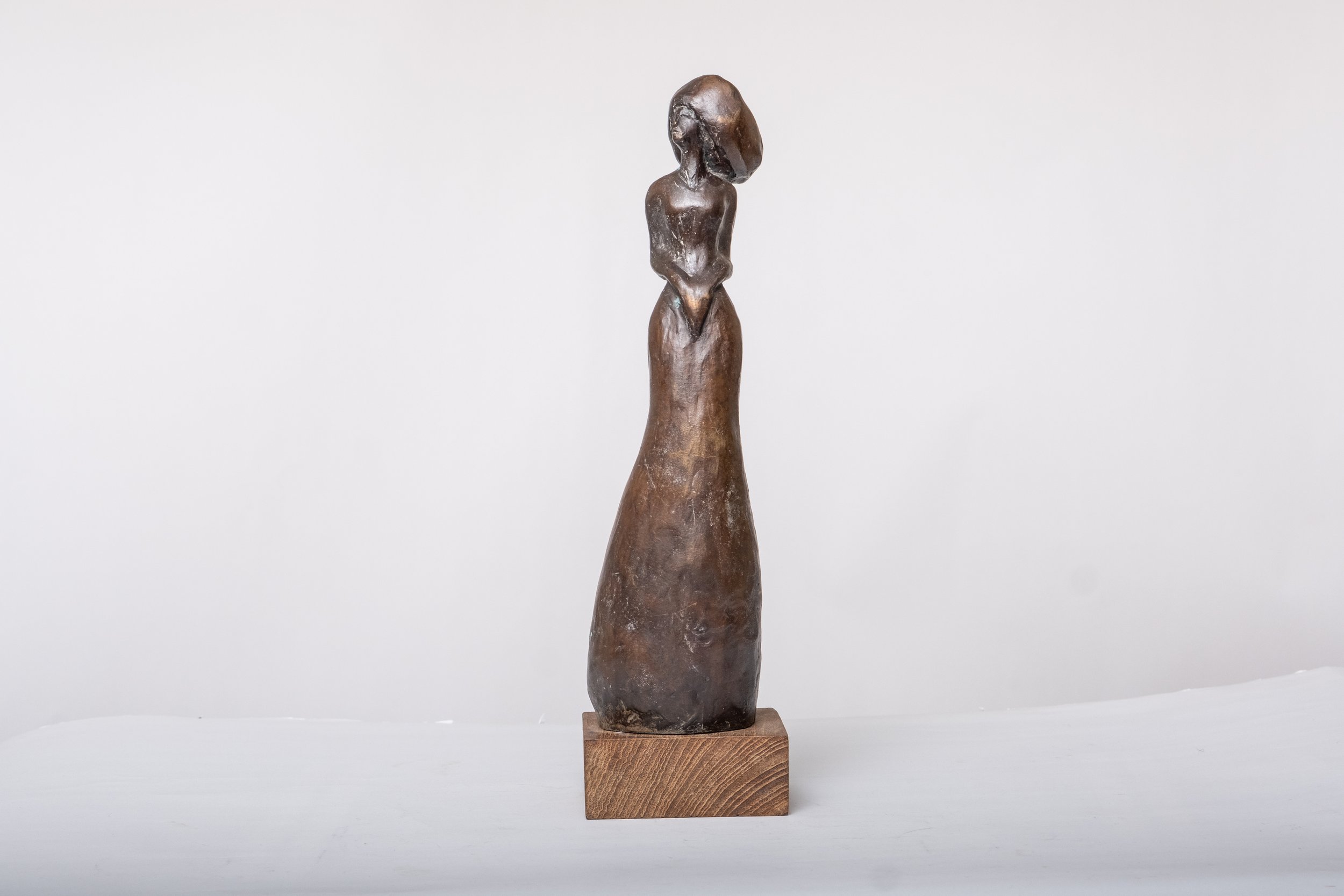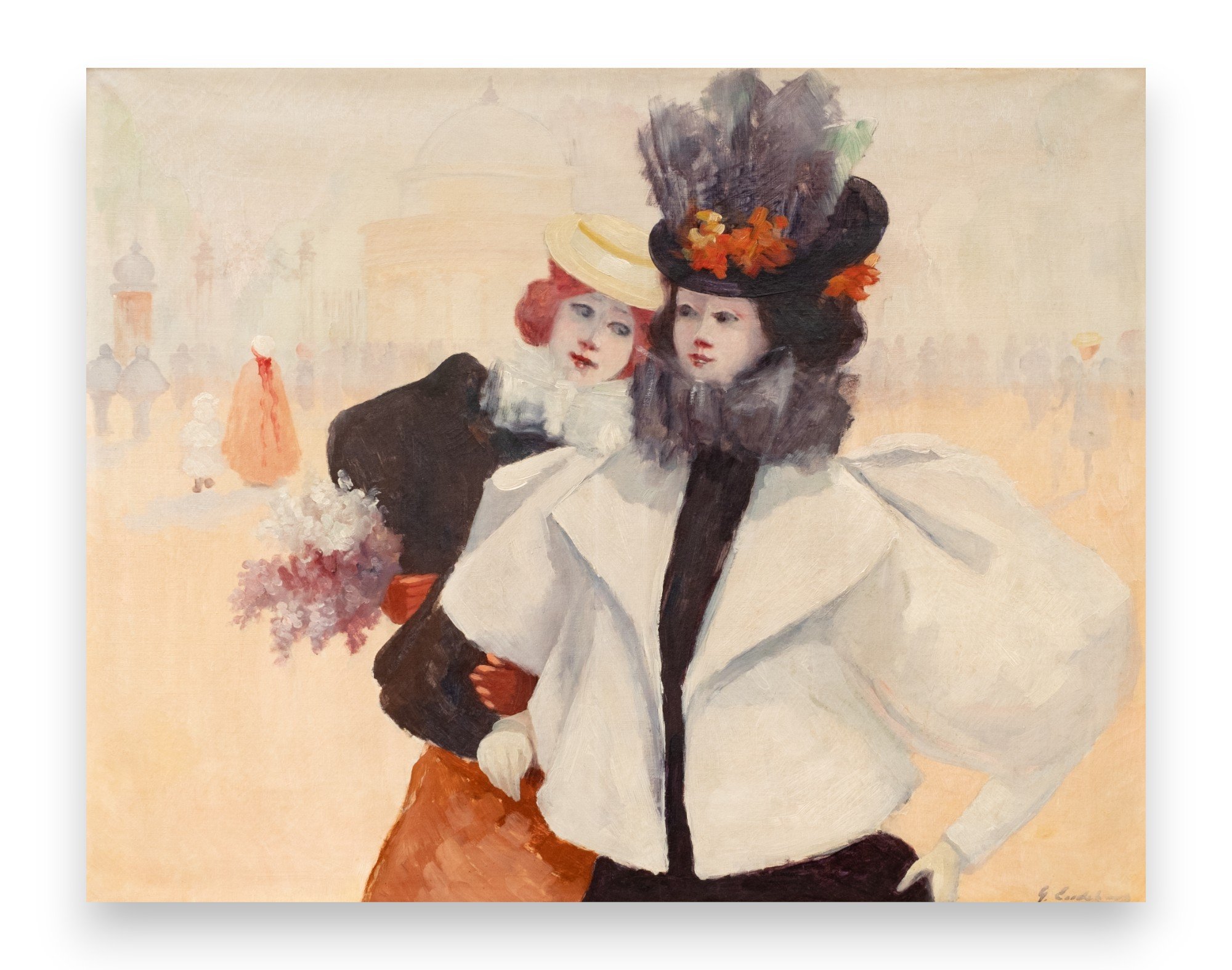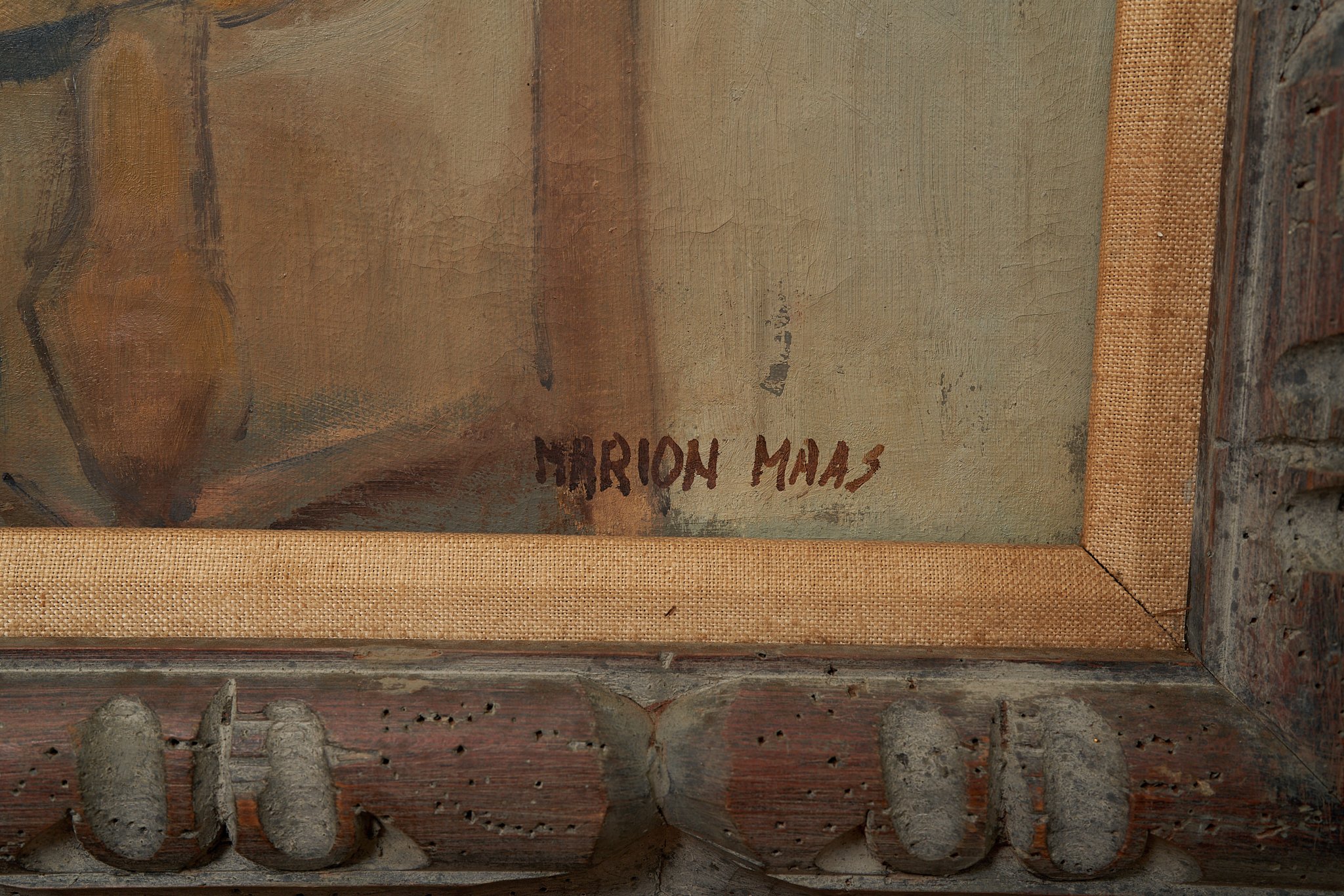 Image 1 of 9
Image 1 of 9

 Image 2 of 9
Image 2 of 9

 Image 3 of 9
Image 3 of 9

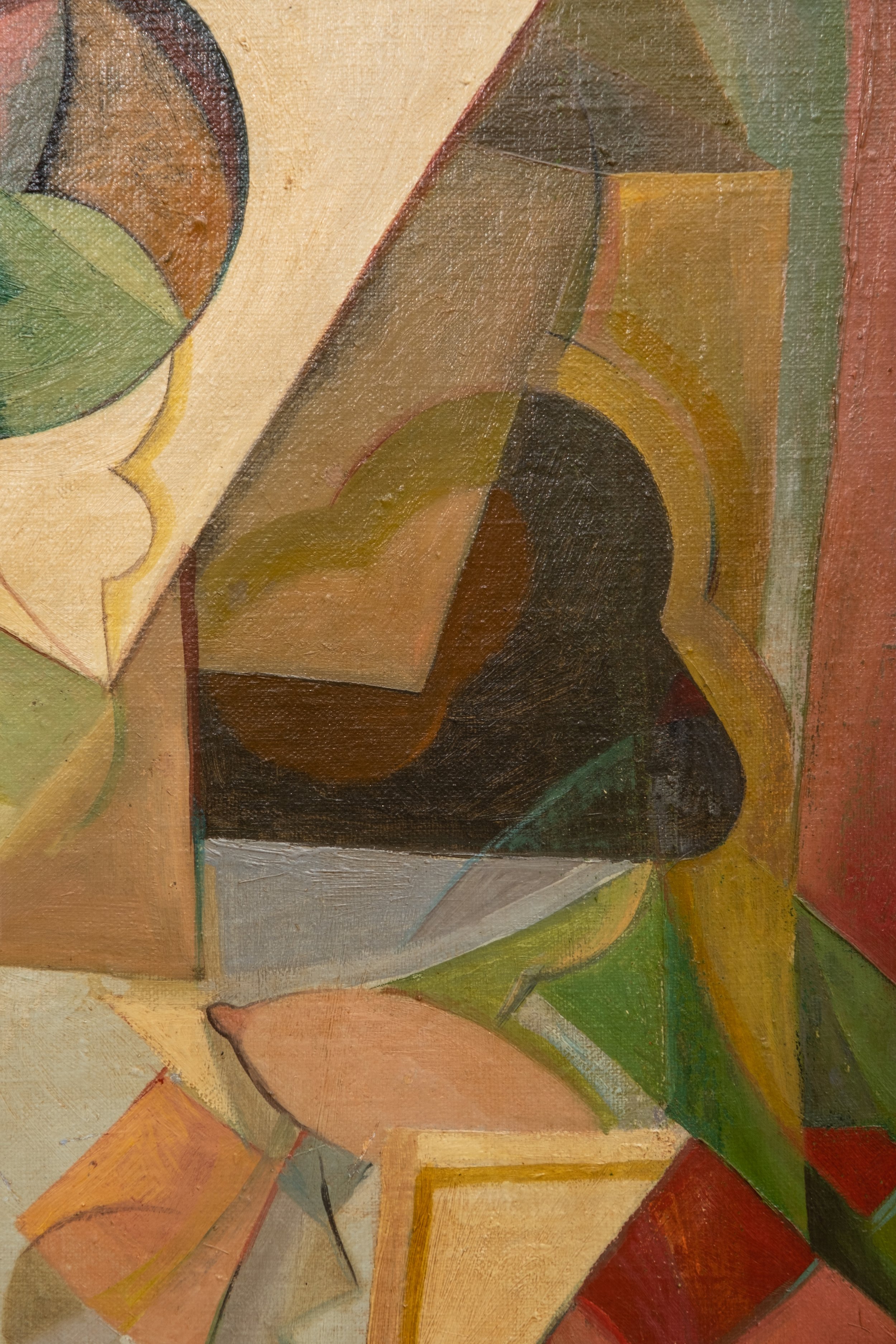 Image 4 of 9
Image 4 of 9

 Image 5 of 9
Image 5 of 9

 Image 6 of 9
Image 6 of 9

 Image 7 of 9
Image 7 of 9

 Image 8 of 9
Image 8 of 9

 Image 9 of 9
Image 9 of 9










Manierre Dawson signed M Dawson Oil on Canvas Cubist Abstract Painting
Signed M. Dawson and therefore attributed to Manierre Dawson ) Oil on Canvas
Manierre Dawson was primarily self-taught, although he trained as an architect. By 1908, he had developed an original style of rigorously simplified shapes. Not long after, Dawson produced a series of completely abstract paintings that featured parabolas, hyperbolas, and circles scattered across the picture surface. They were among the first non-objective works produced by an American, preceding similar work by Arthur Dove by two years.
Returning from a European tour in 1910, Dawson resettled in Chicago, where he abandoned non-objectivity and experimented with styles as he tried to assimilate lessons of the Old Masters as well as the avant-garde. He executed tightly integrated still lifes and fragmented, Cubist-influenced pieces showing the human body in motion, paralleling the work of Marcel Duchamp and the Italian Futurists. When the Armory Show came to Chicago in 1913, its organizer, Walter Pach, was so impressed by Dawson's paintings that he included one of them in the show.
On the verge of recognition, Dawson participated in two important exhibitions: "The Fourteen," organized by Davies and Pach, which presented work by fourteen modern American artists; and "Painting and Sculpture in the Modern Spirit," a one man exhibition organized by the Milwaukee Art Center. The same year he bought a fruit orchard in Ludmington, Michigan. Thereafter, the demands of farming limited Dawson's artistic output to six to twelve paintings a year.
Dawson died in 1969. Today his work is represented in numerous public collections, notably, the Whitney Museum of American Art, the Brooklyn Museum, the Art Institute of Chicago, and the Smithsonian American Art Museum.
30"H x 24.5
Signed M. Dawson and therefore attributed to Manierre Dawson ) Oil on Canvas
Manierre Dawson was primarily self-taught, although he trained as an architect. By 1908, he had developed an original style of rigorously simplified shapes. Not long after, Dawson produced a series of completely abstract paintings that featured parabolas, hyperbolas, and circles scattered across the picture surface. They were among the first non-objective works produced by an American, preceding similar work by Arthur Dove by two years.
Returning from a European tour in 1910, Dawson resettled in Chicago, where he abandoned non-objectivity and experimented with styles as he tried to assimilate lessons of the Old Masters as well as the avant-garde. He executed tightly integrated still lifes and fragmented, Cubist-influenced pieces showing the human body in motion, paralleling the work of Marcel Duchamp and the Italian Futurists. When the Armory Show came to Chicago in 1913, its organizer, Walter Pach, was so impressed by Dawson's paintings that he included one of them in the show.
On the verge of recognition, Dawson participated in two important exhibitions: "The Fourteen," organized by Davies and Pach, which presented work by fourteen modern American artists; and "Painting and Sculpture in the Modern Spirit," a one man exhibition organized by the Milwaukee Art Center. The same year he bought a fruit orchard in Ludmington, Michigan. Thereafter, the demands of farming limited Dawson's artistic output to six to twelve paintings a year.
Dawson died in 1969. Today his work is represented in numerous public collections, notably, the Whitney Museum of American Art, the Brooklyn Museum, the Art Institute of Chicago, and the Smithsonian American Art Museum.
30"H x 24.5
Signed M. Dawson and therefore attributed to Manierre Dawson ) Oil on Canvas
Manierre Dawson was primarily self-taught, although he trained as an architect. By 1908, he had developed an original style of rigorously simplified shapes. Not long after, Dawson produced a series of completely abstract paintings that featured parabolas, hyperbolas, and circles scattered across the picture surface. They were among the first non-objective works produced by an American, preceding similar work by Arthur Dove by two years.
Returning from a European tour in 1910, Dawson resettled in Chicago, where he abandoned non-objectivity and experimented with styles as he tried to assimilate lessons of the Old Masters as well as the avant-garde. He executed tightly integrated still lifes and fragmented, Cubist-influenced pieces showing the human body in motion, paralleling the work of Marcel Duchamp and the Italian Futurists. When the Armory Show came to Chicago in 1913, its organizer, Walter Pach, was so impressed by Dawson's paintings that he included one of them in the show.
On the verge of recognition, Dawson participated in two important exhibitions: "The Fourteen," organized by Davies and Pach, which presented work by fourteen modern American artists; and "Painting and Sculpture in the Modern Spirit," a one man exhibition organized by the Milwaukee Art Center. The same year he bought a fruit orchard in Ludmington, Michigan. Thereafter, the demands of farming limited Dawson's artistic output to six to twelve paintings a year.
Dawson died in 1969. Today his work is represented in numerous public collections, notably, the Whitney Museum of American Art, the Brooklyn Museum, the Art Institute of Chicago, and the Smithsonian American Art Museum.
30"H x 24.5



